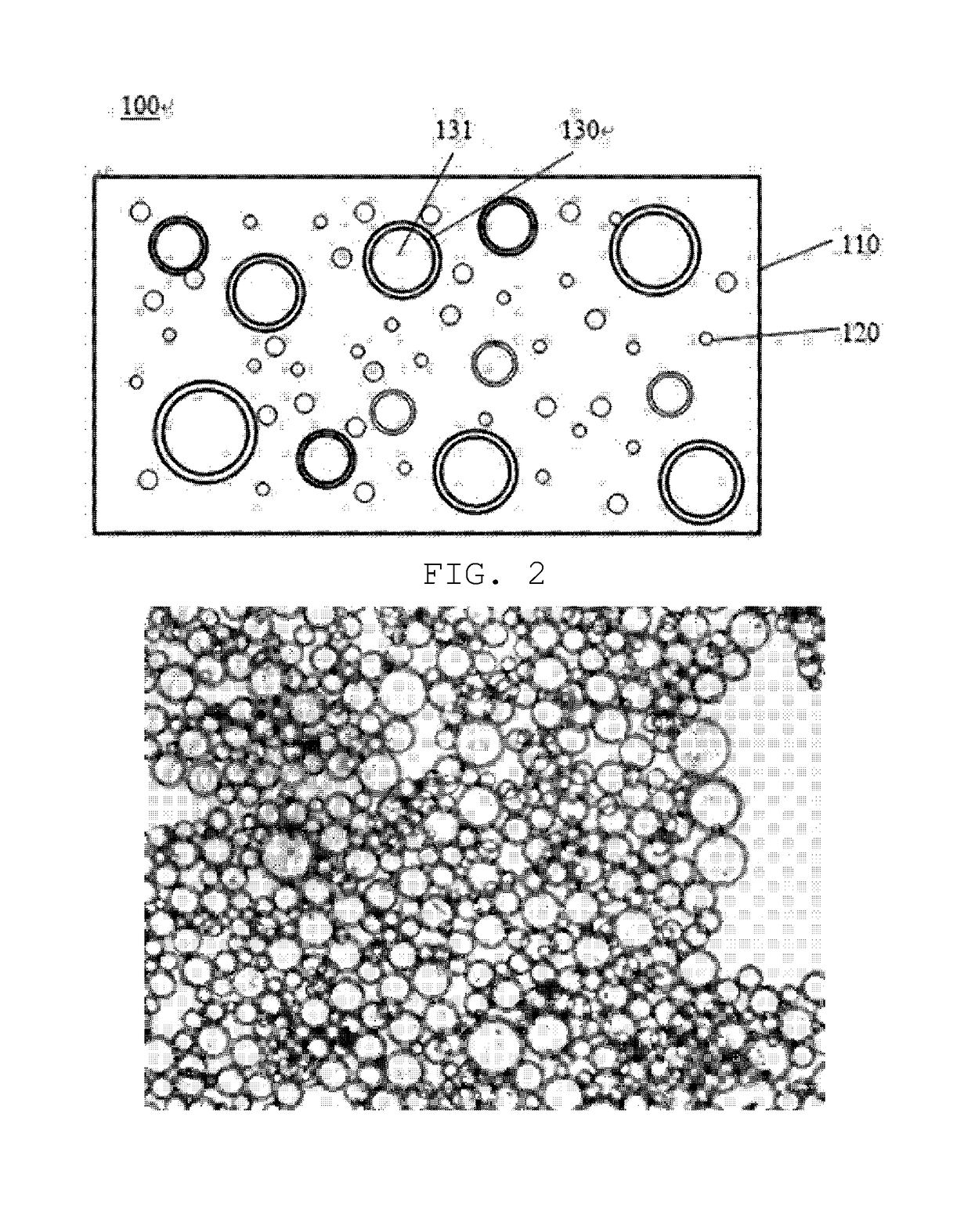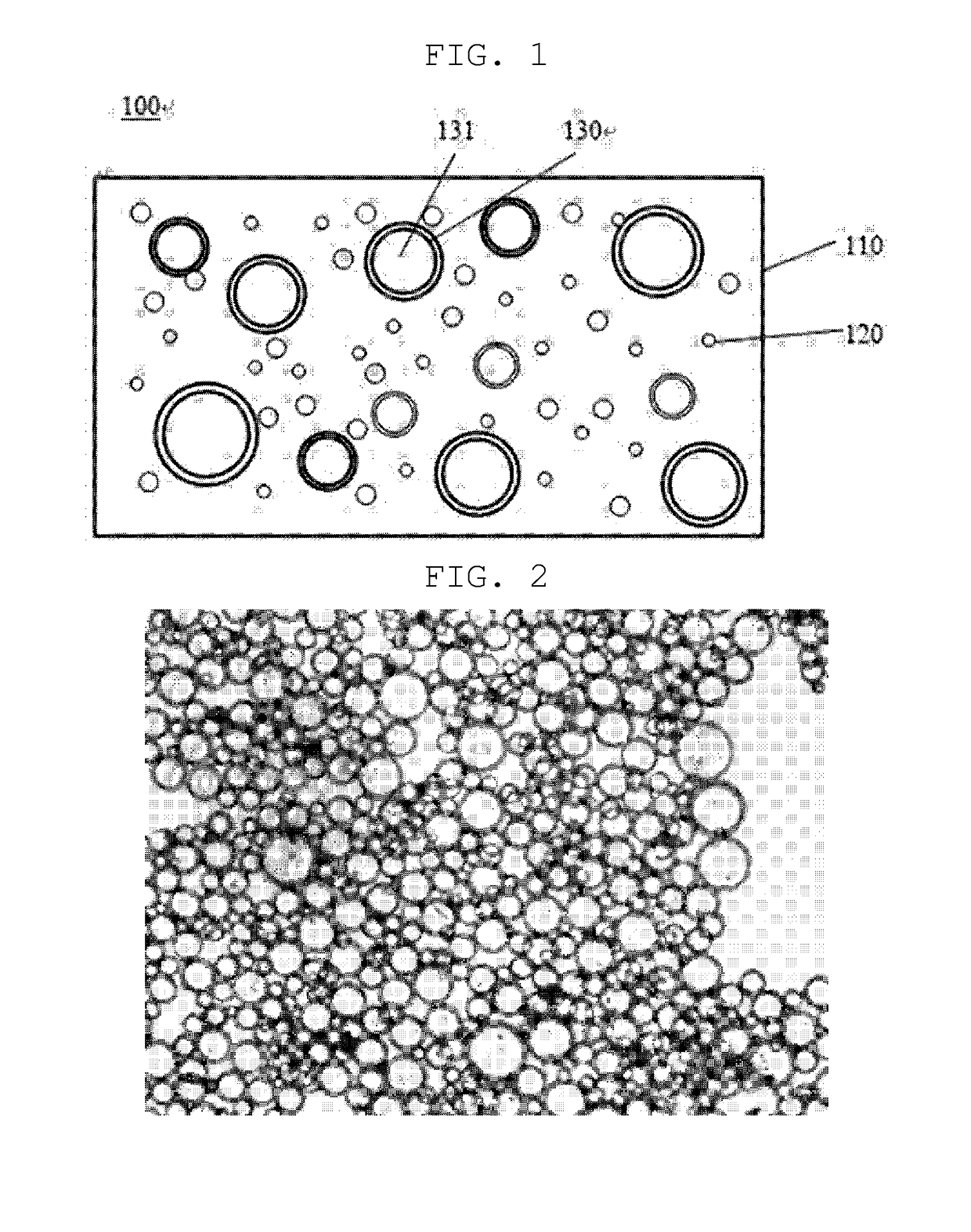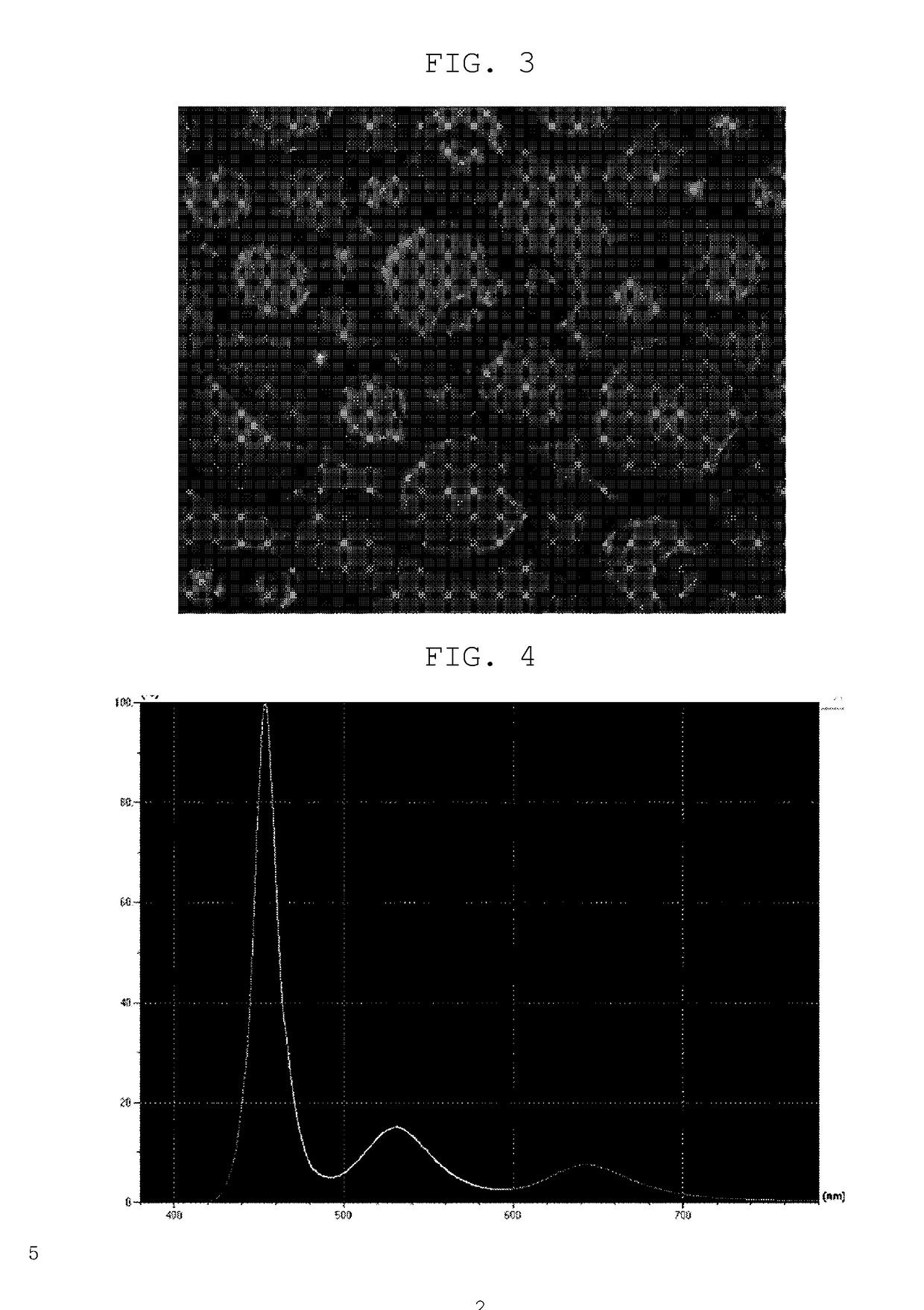Quantum dot composite and photoelectric device comprising same
- Summary
- Abstract
- Description
- Claims
- Application Information
AI Technical Summary
Benefits of technology
Problems solved by technology
Method used
Image
Examples
example 1
[0039]A first mixture was prepared by mixing quantum dots 6.6 g, low-viscosity UV curable resin 2 g, and high-viscosity UV curable resin 2 g, and a second mixture was prepared by mixing scattering particles 2 g and high-viscosity UV curable resin 10 g, the scattering particles being formed from hollow glass or polymer. A quantum dot composite was manufactured by mixing the first mixture and the second mixture at a ratio of 1:0.2. Consequently, the scattering particles are dispersed in the resultant mixture, with the amount of the scattering particles being 3.08% by weight of the quantum dot composite.
example 2
[0040]A quantum dot composite was manufactured by mixing the first mixture and the second mixture of Example 1 at a ratio of 1:0.4. Consequently, the scattering particles are dispersed in the resultant mixture, with the amount of the scattering particles being 5.19% by weight of the quantum dot composite.
example 3
[0041]A quantum dot composite was manufactured by mixing the first mixture and the second mixture of Example 1 at a ratio of 1:0.6. Consequently, the scattering particles are dispersed in the resultant mixture, with the amount of the scattering particles being 6.74% by weight of the quantum dot composite.
PUM
 Login to View More
Login to View More Abstract
Description
Claims
Application Information
 Login to View More
Login to View More - R&D
- Intellectual Property
- Life Sciences
- Materials
- Tech Scout
- Unparalleled Data Quality
- Higher Quality Content
- 60% Fewer Hallucinations
Browse by: Latest US Patents, China's latest patents, Technical Efficacy Thesaurus, Application Domain, Technology Topic, Popular Technical Reports.
© 2025 PatSnap. All rights reserved.Legal|Privacy policy|Modern Slavery Act Transparency Statement|Sitemap|About US| Contact US: help@patsnap.com



